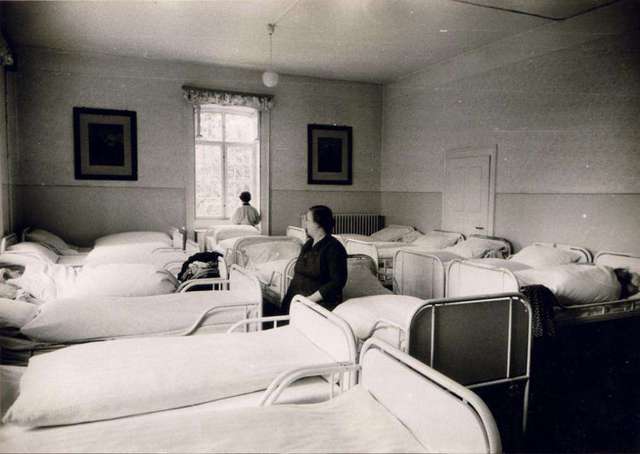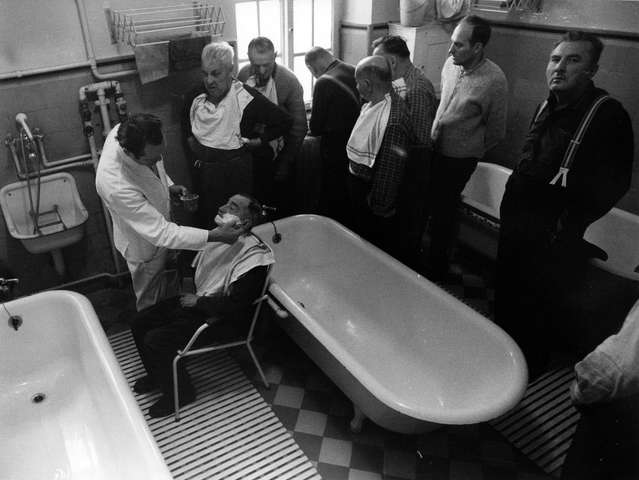Post-war psychiatry
After the war, psychiatric hospitals in Germany were in a pitiful condition. In many cases, the patients encountered the same doctors and nurses as in the National Socialist era. The supply system was designed to keep patients in custody. Exploitation of patients' labour, strict discipline and almost non-existent privacy were common aspects of everyday life in the institutions. The patients usually had to live in dormitories with poor hygiene for a long time. Here, they shared the cramped space with a few people who had a wide variety of mental illnesses. One doctor often had to take care of more than a hundred patients at the same time. The nursing staff's main task was chiefly to maintain order, safety and cleanliness in the wards.
As of the mid-1950s, new psychiatric drugs offered other ways to treat psychiatric conditions. The traditional system of institutions in Germany was not designed for these new options: there were hardly any treatment and care options outside the hospital. Many facilities were overcrowded.
Since the 1960s, this deplorable state of affairs had been entering the public consciousness ever more clearly. Driven forward by a new generation of young psychiatrists, West German psychiatry would undergo reform at the beginning of the 1970s. Initial stocktaking at that time highlighted the »inhumane conditions« in the institutions. With the »Psychiatrie-Enquete« (the German Report on the State of Psychiatry) decreed by the Bundestag in 1975, institutions started to be downsized and supplemented by outpatient care services.

© Pfalzklinikum für Psychiatrie und Neurologie, Klingenmünster

© Haus der Geschichte Baden-Württemberg, Sammlung Rupert Leser